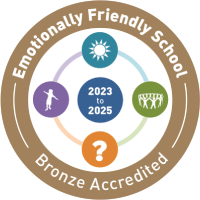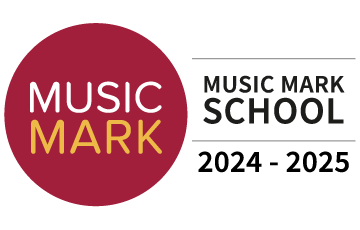Promoting The Protected Characteristics
Promoting the Protected Characteristics at Wardley CE Primary School
We work to ensure that our children understand that:
There are no outsiders at Wardley.
Everyone is different.
We celebrate our differences.
We are all equal in our differences
The equality Act became law in 2010. It covers everyone in Britain and protects people from discrimination, harassment and victimisation. Everyone in Britain is protected. This is because the Equality Act protects people from discrimination due to the protected characteristics that we all have. Under the Equality Act, there are nine Protected Characteristics:
- Age
- Disability
- Gender reassignment
- Race
- Religion or belief
- Marriage or civil partnership
- Sex
- Sexual orientation
- Pregnancy and maternity
At Wardley CE Primary School, we actively promote these in our curriculum and work to embed them into our ethos.
Under the Equality Act you are protected from discrimination:
- When you are in the workplace.
- When you use public services like healthcare (for example, visiting your doctor or local hospital) or education (for example, at your school).
- When you use businesses and other organisations that provide services and goods (like shops, restaurants and cinemas).
- When you use transport.
- When you join a club or association (for example, your local football club).
- When you have contact with public bodies like your local council or government departments.
At Wardley CE Primary School our vision is based upon the principles of inclusion and equality:
We are a Church of England school that values and recognises the uniqueness of each individual child and acknowledges their fundamental right to be educated to their full potential in a safe, secure and caring environment. Our ethos is built on Christian foundations and drives our belief that we can do all things.
At the heart of our school are the values of our Wardley Way, one of these is the value of friendship. This encompasses the idea of inclusion and through celebrating diversity we value the strengths of all and embrace differences.
As such the protected characteristics are integral to our school vision and ethos. They run through our curriculum and are promoted through our collective worship.
At Wardley CE Primary school we have aligned our Jigsaw PSHE lessons to the Equality Act. The grid below indicates some of the Jigsaw lessons that are used to teach about the protected characteristics. Note that this list is not exhaustive as there are numerous other lessons that teach about equality.
|
Protected characteristics |
What this refers to |
Links to Jigsaw 3-11 |
|
Age |
Where this is referred to, it refers to a person belonging to a particular age (for example, 32 year olds) or range of ages (for example, 18 to 30 year olds). |
Celebrating Difference Y4: Age 8-9. Piece 1: Judging by Appearance Y4: Age 8-9. Piece 2: Understanding Influences Y6: Age 10-11. Piece 2: Understanding Difference Y6: Ages 10-11. Piece 3: Power Struggles |
|
Disability |
A person has a disability if she or he has a physical or mental impairment which has a substantial and long-term adverse effect on that person’s ability to carry out normal day-to-day activities. |
Celebrating Difference Y2: Age 6-7. Piece 4: Standing up for Myself and others Y4: Age 8-9. Piece 1: Judging by Appearances Y4: Age 8-9. Piece 6: Celebrating Differences: How We Look Y6: Age 10-11. Piece 2: Understanding Difference Y6: Ages 10-11. Piece 5: Celebrating difference |
|
Gender reassignment |
The process of transitioning from one gender to another. |
Celebrating Difference Y2: Age 6-7. Piece 5: Gender Diversity NB: there is no direct reference to transgender or the concept of transitioning in this lesson. Y6: Ages 10-11. Piece 2: Understanding difference. NB: In Jigsaw the focus is on accepting all people as unique individuals, not on transitioning itself. |
|
Race including Colour, nationality, ethnic or national origin |
Refers to the protected characteristic of Race. It refers to a group of people defined by their race, colour, and nationality (including citizenship) ethnic or national origins. |
Celebrating Difference Y3: Age 7-8. Piece : Families Y5: Ages 9-10. Piece 1: Different Cultures Y5: Ages 9-10. Piece 2: Racism Y6: Age 10-11. Piece 2: Understanding Difference |
|
Religion, belief or lack of religion/belief |
Religion has the meaning usually given to it but belief includes religious and philosophical beliefs including lack of belief (such as Atheism). Generally, a belief should affect your life choices or the way you live for it to be included in the definition. |
Celebrating Difference Y5: Ages 9-10. Piece 1: Different Cultures Y6: Age 10-11. Piece 2: Understanding Difference |
|
Being married or in a civil partnership |
Marriage is no longer restricted to a union between a man and a woman but now includes a marriage between a same-sex couple. Same -sex couples can also have their relationships legally recognised as ‘civil partnerships’. Civil partners must not be treated less favourably than married couples (except where permitted by the Equality Act). |
Celebrating Difference Y3: Ages 7-8. Piece 1: Families Y6: Age 10-11. Piece 2: Understanding Difference Relationships Y1: Ages 5-6. Piece 1: Families Y2: Ages 6-7. Piece 1: Families |
|
Sex |
A man or a woman. |
Celebrating Difference Y2: Ages 6-7. Pieces 1&2: Boys and Girls Y4: Age 8-9. Piece 1: Judging by Appearances Y6: Age 10-11. Piece 2: Understanding Difference Changing Me Y3: Age 7-8 Piece 5: Family Stereotypes |
|
Sexual orientation |
Whether a person’s sexual attraction is towards their own sex, the opposite sex or to both sexes. |
Celebrating Difference Age 6-7 Piece 4: Standing up for Myself and others Age 7-8 Piece 1: Families Age 9-10 Piece 3: Rumours and Name Calling Age 9-10 Piece 4: Types of Bullying Age 10 – 11 Piece 2: Understanding Difference Relationships Age 8- 9 Piece 5: Girlfriends and Boyfriends Changing Me Ages 10-11 Piece 4: Boyfriends and girlfriends |
|
Being pregnant or on maternity leave |
Pregnancy is the condition of being pregnant or expecting a baby. Maternity refers to the period after the birth, and is linked to maternity leave in the employment context. In the non-work context, protection against maternity discrimination is for 26 weeks after giving birth, and this includes treating a woman unfavourably because she is breastfeeding. |
Celebrating Difference EYFS: Ages 3-4/4-5. Piece 3: Families Y3: Ages 7-8. Piece 1: Families Y6: Age 10-11. Piece 2: Understanding Difference |







